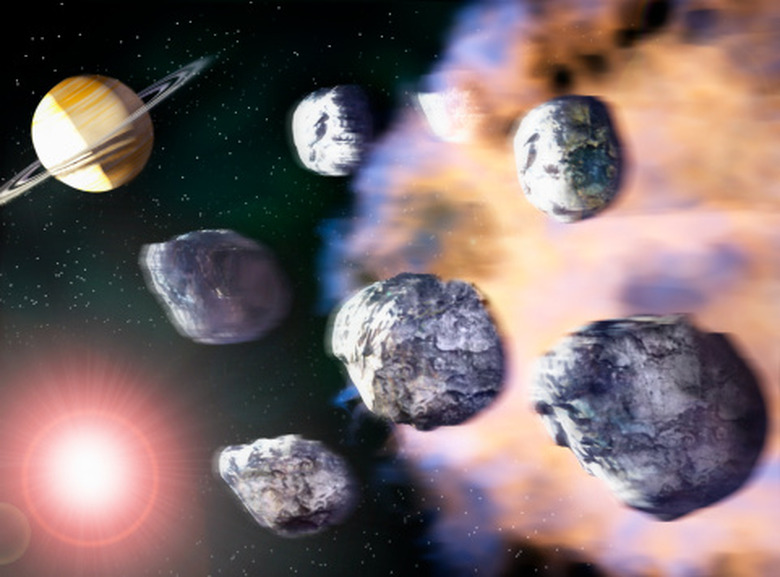Solar System Science Fair Projects For Second Grade
Science fair projects have always been a staple of the middle and high school science curriculum. Even elementary school students as young as second grade can benefit from these learning tools. These projects give students an opportunity to interact with science and demonstrate real knowledge through practical learning. Solar system projects are ideal in second grade because studying the solar system is part of the curriculum in many states and is something young students are interested in and excited to investigate.
Solar System Model
Solar System Model
In second grade, a very basic and standard project for students would be creating a model of the solar system. Students can buy prepackaged models or visit a craft store and buy different size foam balls created expressly for this purpose. The second option gives students more opportunity to demonstrate creativity along with their knowledge of the solar system. Students would be required to put these models together to show the planets' placement and rotation around the Sun.
Moon Studies
Moon Studies
Part of the elementary school curriculum for the solar system involves learning about the moons that orbit a planet. Students can choose one planet to study, such as Mars, and investigate the moons and their properties. Students could create a science board on their chosen planet, then go into detail about each moon or other satellite attached to that planet. Students could make a model of the planet and its moons and their orbits.
Investigating Stars
Investigating Stars
Students learn about the Sun and other stars in the second grade science curriculum in many states. An in-depth study of the Sun with a science board presentation would be an appropriate second grade science project. Students could, with the help of a parent or teacher, do research on another star in the solar system and compare the star's color, temperature and distance to that of the Sun. Students might choose instead to study a category of star, such as supernovas, blue giants, red dwarfs or others. Students could even do a project on the life cycle of a typical star.
Planet Investigations
Planet Investigations
Students in second grade learn about the planets and how they compare to Earth. Doing an individual study on a specific planet would be a reasonable science project for a second grader. Another idea would be to compare key factors between Earth and the chosen planet, such as: atmosphere composition, temperature, presence of water and distance from the Sun. Students can speculate about the possibility of life on other planets based on these factors as well.
Solar System Projects
Solar System Projects
Keep in mind that at the second grade level, solar system projects are not traditional science fair projects, as they do not involve creating a hypothesis and testing it. Students need to ask a question and do research, but there's no experimentation involved in this kind of project.
References
Cite This Article
MLA
Rivers, Pamela. "Solar System Science Fair Projects For Second Grade" sciencing.com, https://www.sciencing.com/solar-system-science-fair-projects-for-second-grade-12747837/. 26 February 2011.
APA
Rivers, Pamela. (2011, February 26). Solar System Science Fair Projects For Second Grade. sciencing.com. Retrieved from https://www.sciencing.com/solar-system-science-fair-projects-for-second-grade-12747837/
Chicago
Rivers, Pamela. Solar System Science Fair Projects For Second Grade last modified August 30, 2022. https://www.sciencing.com/solar-system-science-fair-projects-for-second-grade-12747837/
